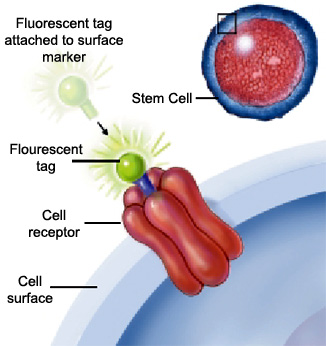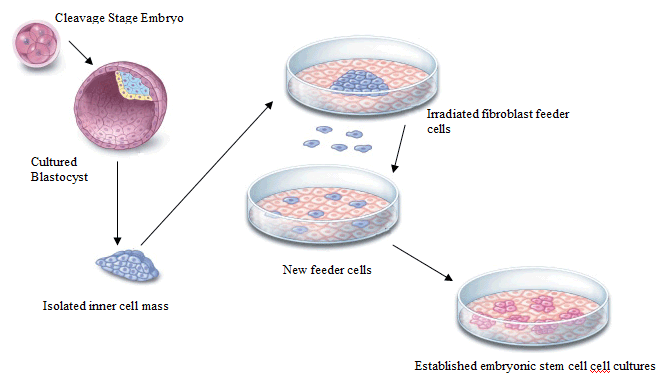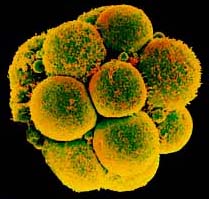
In 1998, James Thomson at the University of Wisconsin-Madison extracted cells from the blastocyst of a human embryo and found them capable of dividing for many generations without specializing. This discovery led to Thomson's development of the first line of human embryonic stem cells. In the following years, scientists proved the pluripotency of these cells through research and observation; a pluripotent stem cell is able to develop into cells from any of the three germ layers - mesoderm, endoderm, or ectoderm. This ability to differentiate into almost any type of cell supports the idea that stem cells may, in the future, be used to generate replacement tissues and organs for those that are damaged or destroyed by the variety of diseases that plague humans. The unique ability of such cells has made them one of the most important discoveries of the current age.
 Since
the discovery of embryonic stem cells, similar cells have also been found
in adults. These adult stem cells are unspecialized cells that are derived
from specialized tissue within a fully developed human. Embryonic stem
cells, on the other hand, are extracted from human embryos four to five
days after formation. Despite the difference in origin, both types of
stem cells are able to divide into identical copies of themselves for
the lifetime of the organism. The two types of stem cells also display
similar healing capabilities. Cells from both sources have been observed
to reproduce and differentiate after being transplanted into an animal
host; also, after implantation both types of stem cells reportedly have
a tendency to drift towards damaged tissues within the host and begin
repairs. These observations testify to the healing value of stem cells.
Since
the discovery of embryonic stem cells, similar cells have also been found
in adults. These adult stem cells are unspecialized cells that are derived
from specialized tissue within a fully developed human. Embryonic stem
cells, on the other hand, are extracted from human embryos four to five
days after formation. Despite the difference in origin, both types of
stem cells are able to divide into identical copies of themselves for
the lifetime of the organism. The two types of stem cells also display
similar healing capabilities. Cells from both sources have been observed
to reproduce and differentiate after being transplanted into an animal
host; also, after implantation both types of stem cells reportedly have
a tendency to drift towards damaged tissues within the host and begin
repairs. These observations testify to the healing value of stem cells.
There are some differences in the abilities of the two types of cells. While embryonic stem cells can generate into cells from each of the three germ layers, scientists have yet to record pluripotency in adult stem cells. Adult stem cells as of yet only produce specialized cells from within the same germ layer that the parent cell originated. In addition, in laboratory conditions, embryonic stem cells are able to divide for many generations without differentiating. Adult stem cells, in contrast, usually do not regenerate for more than two generations before they specialize. The questionable pluripotency of adult stem cells as well as the ability of embryonic stem cells to create a line of clones without specializing has made the more scarce embryonic stem cells favored in research.

